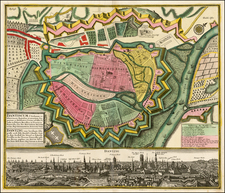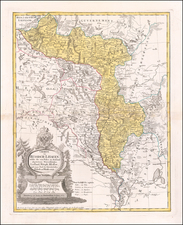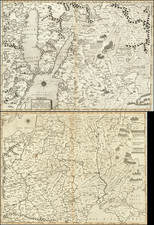Soviet Educational History of Warsaw During World War II.
Rare Polish mapping of Warsaw showing the city's history during the Second World War.
The map, published under the auspices of Communist leadership, is an extremely detailed look at the atrocities perpetrated by the Nazi occupiers. The amount of data shown on the map is impressive and reflects years of research, but there are many things that the map leaves out. Most notably, the map completely omits any mention of Jewish persecution or of the Warsaw Ghetto - a stunning gap for a piece that covers Warsaw in the Second World War. This may be considered clear evidence of Soviet anti-Semitic biases.
The legend in the upper right depicts the many events in Warsaw during the war. Black crosses depict "Hitler's crimes," with their size reflective of the population murdered. The Yellow crosses show sites of battles during the 1939 defense of Warsaw, while green crosses and explosions show battles fought by the resistance movement and sabotage efforts. An inset in the upper right shows the center of Warsaw in greater detail.
Almost without a doubt, Warsaw was the European city most heavily destroyed during the Second World War. Even before the Nazi invasion, the Wehrmacht leadership had already planned to completely obliterate Warsaw at some unknown point (possibly even turning it into an artificial lake, as was the plan for Moscow). This level of anti-Polish hatred was manifest in all aspects of life under Nazi rule in Warsaw, ranging from the endless deportations to the brutal suppression of the Warsaw Uprising. While this map shows Soviet supply drops and other points of Soviet aid, the Russian army was, in fact, complicit in these efforts. Russian troops stood by while the Warsaw Uprising was fought, delivering almost no help to the denizens of the city in their time of need.
The map was printed in 1984 by the Polish state printing company, the PPWK. The map was produced under the patronage of Rada Ochrona Pomników Walki i Męczeństw and edited by Janosz Łopatto, Janusz Supernat (responsible for the battle plans) and Alina Meljon (responsible for the cemetery plan). This is the second edition of the map, with the addition of the plan of the Warsaw cemetery on the verso.
Polish Reinterpretations of the Holocaust
Studying the effects of the German occupation in Poland is a delicate subject. While it is certain that Poland suffered at least as badly as any other European nation during the Second World War, reinterpretations of the Holocaust in the country have also been used to satisfy nationalistic tendencies. It has become evident to Western observers in the last several years that there is a strong nationalist movement in Poland that seeks to place blame for the Holocaust solely on the shoulders of non-Polish actors, a movement originally fostered under Soviet rule. This movement has gone so far as to limit freedom of speech, criminalizing (with a three-year sentence) the suggestion that Poland or its citizens (in any form) participated in the murders committed by Nazis. As such, the term "Polish concentration camps" has been deemed unacceptable, with the government-approved term being "concentration camps on Polish territory."
The map does not contain any information that can be considered plainly discriminatory, but the omission of mention of some of the most persecuted groups reveals a Soviet bias to the map. The language on the map is simple, naming only "Hitler's Invaders," and like terms. Maps like these can easily be converted into propaganda instruments. Today's Polish leaders, most of whom grew up during Soviet occupation, will have formed their understanding of the Holocaust through maps like these which represent the events as a genocide perpetrated evenly against all Poles, and not focused against any subgroups in particular.
Soviet Censorship
The map would have had to go through Soviet censorship. Focusing on the heroism of Soviet soldiers involved in the liberation of Warsaw would have been a prerequisite condition upon which the publication of the map rested. Further, the lack of mention of any Soviet atrocities, like their refusal to help the uprisings, requires no explanation. In addition, the Warsaw Ghetto is completely sidestepped, something that would be unthinkable today on any piece that is made regarding the war and reflects Soviet preferences to discuss specific ethnicities.











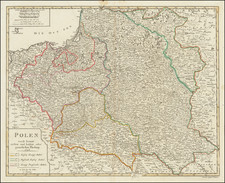
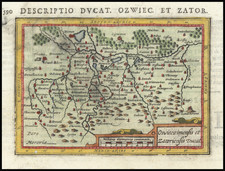
![Pomeraniae, Wandalicae Regionis Typ [with] Livoniae Nova Descriptio [with] Ducatus Oswieczensis, et Zatoriensis, Descriptio](https://storage.googleapis.com/raremaps/img/small/61683.jpg)
